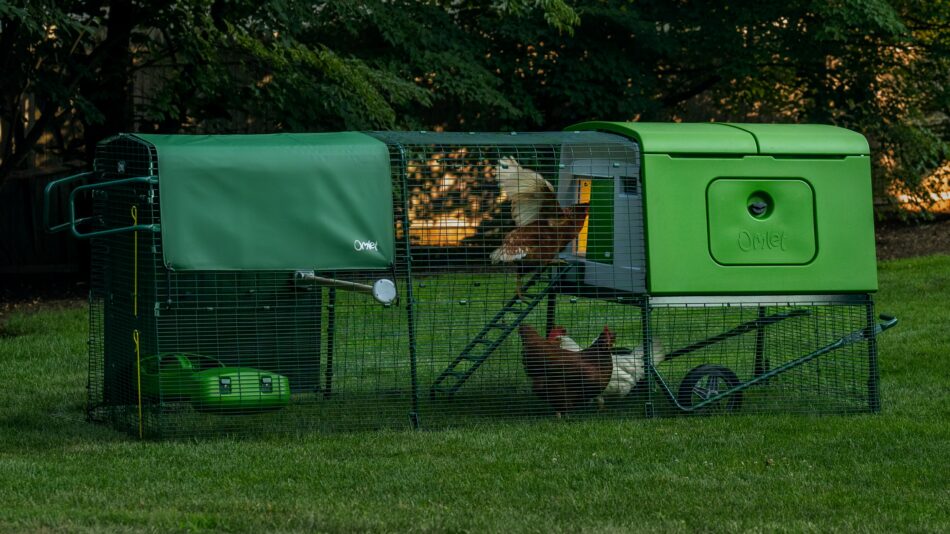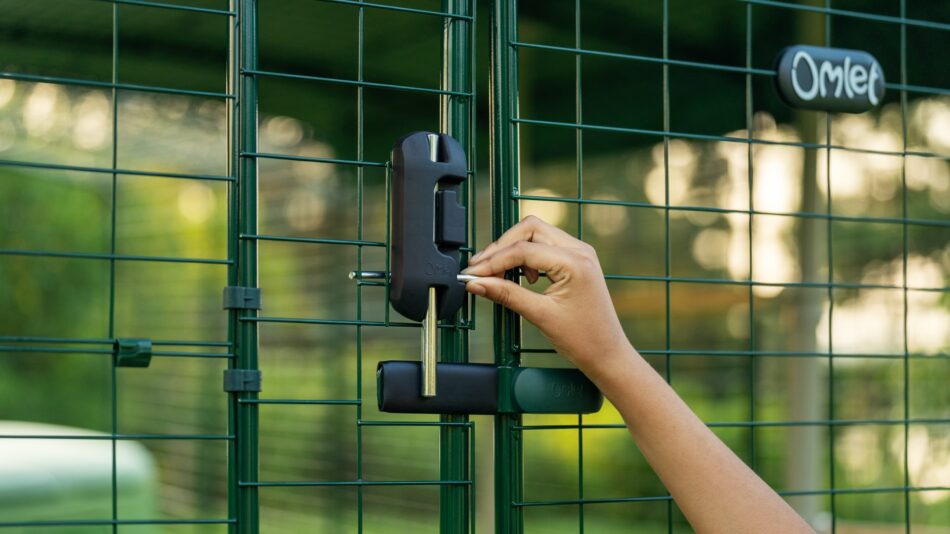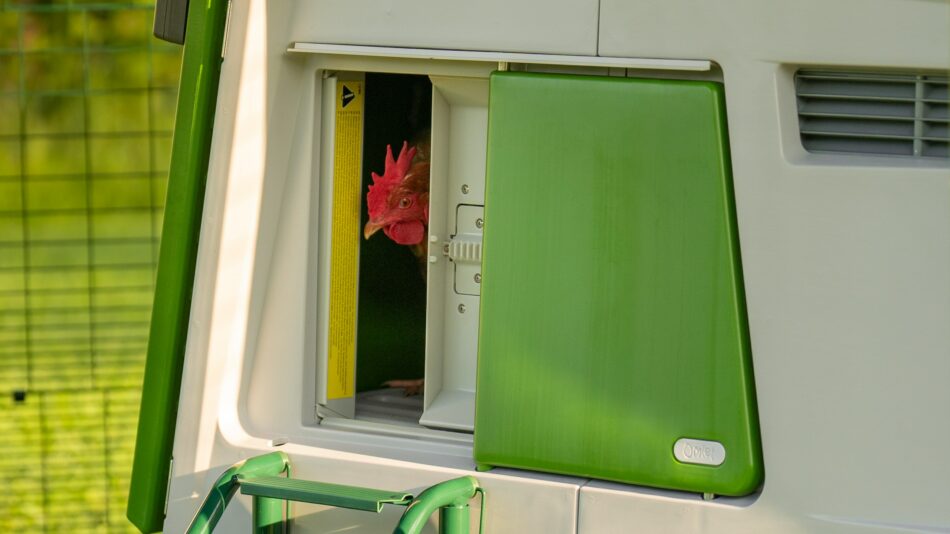How to tell which predator killed your chicken
It’s always heartbreaking to experience loss in your flock, but it can be particularly traumatic to lose a hen to a chicken predator attack. Knowing how to tell which predator killed your chicken will help stave off future attempts at the rest of your flock though. As prey animals, chickens are vulnerable to a number of predators, but fortunately, there are ways that flock-raisers can keep their hens safe from these coop criminals.
Chickens and predators
Chickens are vulnerable animals for many reasons. They draw attention to themselves through their series of noises, their eggs are delicacy to many predators, and hens are not adequately equipped to defend themselves. Chicken predators can be anything from wild animals like hawks, foxes, raccoons or snakes, to neighborhood dogs and cats. Being vigilant against predators of all species is the best way to keep your flock protected.
Signs of predators
Identifying the signs of chicken predators can help prevent their presence around your chickens’ area. If you can determine the type of predator that’s threatening your flock, you can take the appropriate actions to thwart their efforts. Some predators leave a “calling card” by which you can identify them, while other signs may be more inconclusive. While it’s possible that some predators might leave little to no trace of their attempts, there’s almost always evidence of foul play when a chicken goes missing or turns up injured – or worse.
Are eggs missing?
Many predators are more interested in your hens’ eggs over the meat on their bodies. Predators that are infamous for nest raiding include:
- Rats
- Snakes
- Possums
- Weasels
It’s possible for other predators to swipe eggs and leave your flock alone, but more often than not, larger or more aggressive predators will go after chickens and their eggs at the same time.
Look for traces of broken egg shells or damp areas in the nesting area that would indicate eggs have been broken. Mammals that break into the nesting box will usually enjoy their meal right there, leaving evidence behind. They may also crush other eggs in the process. Snakes on the other hand will leave no trace, as they ingest the egg whole. Evidence of a snake raiding the nest is little to none – eggs will simply be gone.
Did the attack occur during the day or at night?
Most chicken predators operate under the cover of darkness, but some predators are brazen enough to strike during the day. These include:
- Hawks and eagles
- Snakes
- Dogs and cats
Large birds of prey (with the exception of owls) are most active during the day. And, since snakes are cold-blooded, they will rely on the sun to dictate their daily schedule – making them more active during the afternoon hours. Dogs and cats can be a problem at any hour, but as most domesticated pets follow the schedule of their owners, daytime hours are usually their most active times.
The remaining chicken predators are either nocturnal, or most active at dawn and dusk. These include:
Are there visible signs of forced entry?
The type of damage that the ground, the run, or the coop sustains can give you clues as to what was trying to get to your flock. If the roof of the run or coop is indented, it may point to heavier predators like:
- Bears
- Bobcats
- Raccoons
Teeth and claw marks may also be visible on the coop with these predators.
Observe the ground around your coop and run for footprints. Smartphone apps or a quick online search can help you identify what type of animal tracks were left behind. If you see evidence of digging or an attempt to tunnel into the run, you may be dealing with:
- Coyotes or domesticated dogs
- Weasels
- Foxes
- Skunks
How many chickens were involved?
If the predator was successful in getting to your flock, take note of how many birds were injured, killed, or have turned up missing. Large numbers of affected hens usually point to larger, more ambitious predators. And, as unpleasant as assessing a chicken predator crime scene may be, it’s also important to note the types of injuries or the location of the affected hens. Most chicken predators will take their prey with them, but a few will leave carcasses behind. These include:
- Raccoons (especially if they reached through the run)
- Owls
- Rats
- Snakes
- Domesticated dogs
What are the visible causes of death or injuries?
Deceased hens with a wet head or neck likely fell prey to rat snakes that use constriction much like pythons to kill their prey. They can’t fit a full-grown hen inside their mouths – but it’s not for the lack of trying. Hen carcasses that are missing heads or sections of their necks are trademark signs of owls and raccoons. Rats will dole out multiple bite wounds on a hen, and may leave just gnaw marks or missing sections of flesh once the hen is deceased.
Finally, many dogs kill for sport – it’s part of their nature. “Prey drive” is a common attribute of many breeds of dogs, and often once the chase is over, they are no longer interested in their intended prey. Chickens killed by dogs will usually be found with no visible injuries.
How to prevent predator attacks
Chicken predators are something that all chicken keepers will have to address at some point in their journey. Both urban and rural flocks are at risk, and all chicken keepers should be vigilant about keeping them safe. Thankfully, Omlet’s modern chicken coops and runs are mindful of this need, and are designed to keep chickens safe from a variety of threats.
A predator-resistant chicken coop like the Eglu Cube should be your first line of defence against chicken predators. This strong chicken coop has features like:
- Locking exterior doors
- Unique coop door opening and closing mechanisms
- Anti-dig skirting and raccoon-resistant mesh along the bottom of the attached run
The Eglu Cube is strong – our customers have reported their Eglu Cubes withstanding attacks from foxes, bobcats, and even full-grown bears.
For added protection, the Autodoor can be added to the Eglu Cube. This automatic chicken coop door keeps your flock even safer at night due to:
- Strong, horizontal opener that operates on a screw-style mechanism making prying it open nearly impossible for predator paws
- The ability to close on a schedule, keeping your hens safely inside during peak predator hours
- Thick, heavy-duty plastic that not only insulates, but serves as a fortress against predator paws and claws
And, for bottom-to-top protection, a strong chicken run will keep your hens safe while they enjoy their time out of their coop. Our Walk In Chicken Run is designed with:
- Heavy-duty welded wire
- Anti-dig skirting
- Roof panels to prevent aerial attacks
Finally, try to collect eggs daily to prevent attracting predators in. Eggs can stay in the coop for weeks, but leaving them for more than a day or two will invite unwanted guests.
Omlet and your flock
Predators don’t have to put a damper on owning chickens. With expertly designed products from Omlet, you’ll get the drop on the bad guys. The prevailing combination of the Eglu Cube, Smart Autodoor and Walk In Chicken Run will help keep your hens fully protected from whatever predators may come their way.
This entry was posted in Chickens



